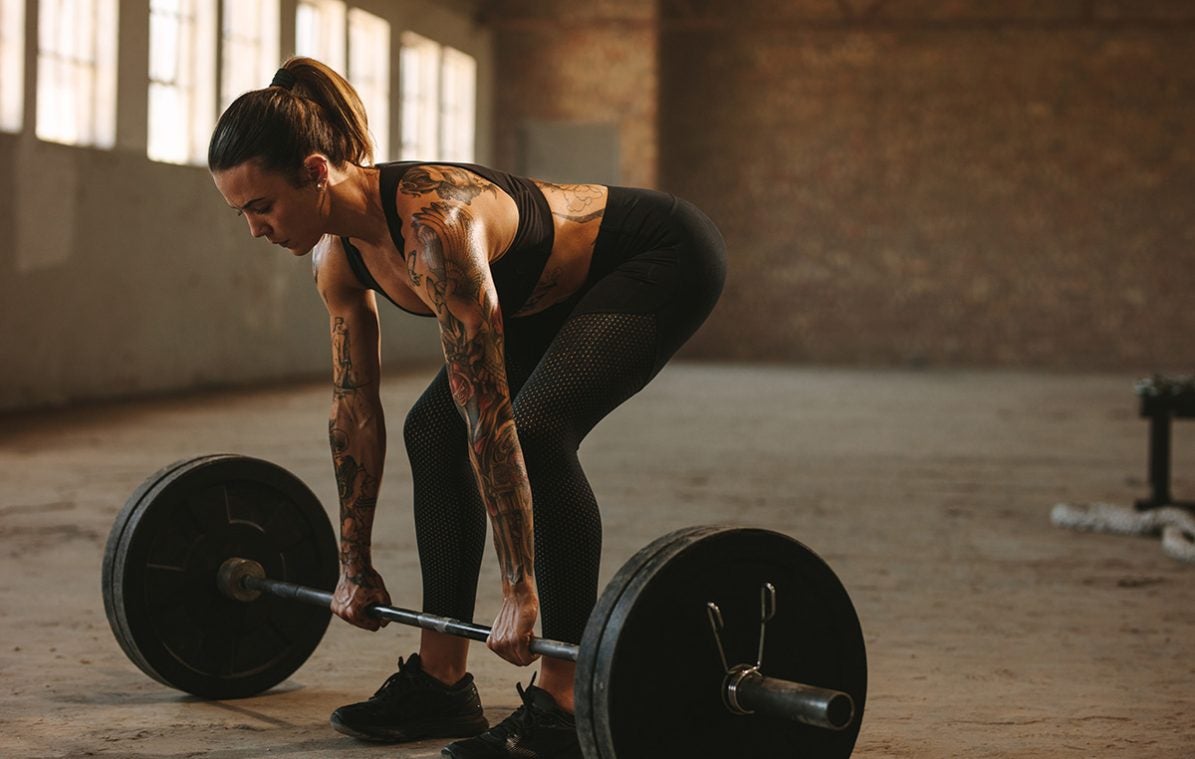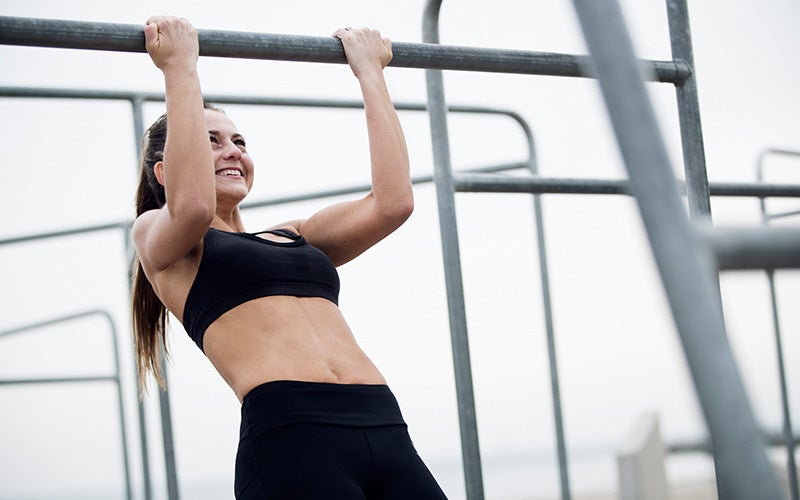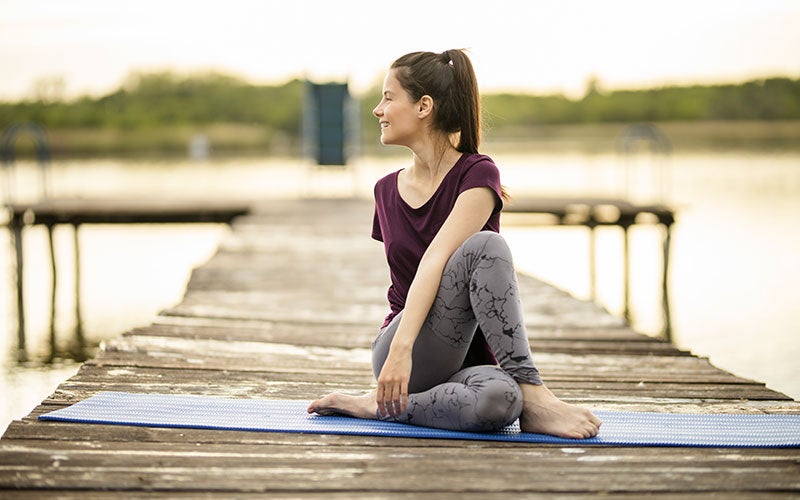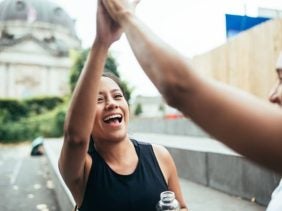Working Out On Your Period: Work with your hormones
 ©Jacoblund
©Jacoblund
Ever wondered why you feel more sluggish in your workouts when you’re on your period? Or asked yourself if you should work out at all when you have period pain or a heavy flow? Although you’re probably pretty familiar with at least one part of your period, there’s still tons of myths going around about the relationship between periods and exercise. We’ll fill you in on what really makes your body tick throughout your cycle and how you can adjust your fitness plan to get the most out of working out on your period!
Editor’s note: Lots of people who menstruate aren’t women. We are fully inclusive. So we’ve removed as much gendered language from this article as possible. At foodspring, we are here for every. single. body.
First things first: The menstrual cycle can have a variety of effects on your well-being. For example, you may feel low energy on some days, experience period pain, and suffer from PMS symptoms, or you may have little to no discomfort. Performance highs or lows may come along with certain phases of your cycle, but they also might not. Either way, it doesn’t hurt to keep an eye on your period and have it in mind when putting together your workout plans.
If you notice that you’re feeling sluggish during your workout and there’s no other reason (didn’t sleep well? haven’t had a pre-workout meal?), then your ups and downs may be caused by the shift in hormones in your body. To better understand the impact your period can have, we’ll start by giving you a rough overview of the cycle itself. Because once you can follow what’s happening in your body, you’ll not only be able to optimize your workouts, but also better understand why you feel how you feel.
What Is the Menstrual Cycle?
The menstrual cycle encompasses many of the recurring processes in your body that last from puberty to menopause. The main purpose of the cycle is to prepare the body for the possible fertilization of an egg and the pregnancy that comes after it. This includes the growth and breakdown of the uterine lining, the maturation of an egg, and various hormone changes, as well as their effects on the body.
Our reading tip: Want to learn more about the impact of menopause on your body and health? Check out our article on how menopause affects your body fat.
All of this may sound a bit complicated at first. But even though there’s a lot going on in your body, it’s possible to make sense of it. In order to understand the periods, processes, symptoms, and how they are interrelated, we need to look at the cycle’s individual phases first.
The cycle is usually divided into several phases, beginning on the first day of menstruation and ending on the day before your next period. The length of the phases we use for our overview are based on an average cycle length of 28 days. These data also only apply when you aren’t taking hormonal contraceptives.
Important Note: Of course, there is no such thing as an “average cycle” that repeats exactly every 28 days. Every cycle can fluctuate and vary from person to person and from month to month. For example, its length can vary between 25 and 35 days. That’s why it makes sense to note and observe the timing, flow, and regularity of your periods, as well as any pain. A consistent record will help you better understand your health.
Phases of the menstrual cycle at a glance1
- Menstruation (1st to 5th day)
This is what’s commonly called your period. It’s mainly triggered by the drop in the hormone progesterone. The functional layer of the endometrium in the uterus is shed through your uterine canal, together with about 50 ml of blood. The endometrium forms the inner wall of the uterus and is the place where a fertilized egg can implant. If no egg has implanted, your body sends a signal to start your period.
- Follicular phase (6th to 12th day)
This phase of the cycle owes its name to the role the follicles in the ovary play. The follicle is the sac in which an egg matures. This sac also produces estrogens (hormones), which it releases into the blood. These include a hormone called estradiol, which is responsible for ensuring that the lining of the uterus is rebuilt.
- Ovulation (13th to 16th day)
At the beginning of ovulation, estrogen levels continue to rise until they reach their peak, and then drop again. The drop initiates ovulation. The follicle bursts and releases the egg, which is transported via the fallopian tube to the uterus. If fertilization does not occur within 24 hours, the egg dies.
- Luteal phase (17th to 28th day)
The “empty” follicle then transforms into the so-called corpus luteum. The corpus luteum produces the hormones progesterone and, in small amounts, estrogen. If pregnancy does not occur, the corpus luteum dissolves leading to a drop in the concentration of progesterone and estrogen in the blood. This, in turn, triggers the shedding of the endometrium and the cycle starts all over again.

What Roles Do Hormones Play on Working Out on Your Period?
As you probably noticed in the previous section, your period is controlled by hormones. Hormones have a huge effect on our bodies: they can put us in a good mood, make us hungry, or sharpen our focus – just to name a few examples.
Hormones like estrogen and progesterone, which are produced in the ovaries, are essential for your cycle. FSH (follicle stimulating hormone) and LH (luteinizing hormone) also play major roles and are controlled by the pituitary gland. Among other things, FSH and LH stimulate the growth of the follicle: the sac in which a new egg cell can mature.
The concentration of these hormones in the blood changes depending on the phase you’re currently in. Estrogen and progesterone in particular can have an impact on your mood and physical performance. That’s why we’re taking a closer look at them today.
Estrogens is the umbrella term for a group of hormones including estrone, estradiol, and estriol, which make sure the lining of the uterus is built up. Estrogens also have an activating effect on the body in general. For example, they can increase the activity of messenger substances such as serotonin and dopamine (hormones that help make us feel good), as well as norepinephrine (a stress hormone that makes us more efficient).
Progesterone is estrogen’s counterpart and has more of a dampening effect. Among other things, this hormone serves to prepare the body for pregnancy, so it can lead to water retention and weight gain while increasing your body temperature. It also loosens your ligaments, which can increase the risk of injury during exercise2.
Our Guide to Exercising During Your Period
Now you’ve got an idea of what hormonal changes are related to your period. The next step is to use them to your advantage and adjust your regular exercise plan accordingly.
Just remember, we’re all different. Some of us experience the ups and downs of physical or mental well-being more intensely than others. Other factors like sleep quality, nutrition, stress, and recovery time can have a huge impact on your performance and should always be considered regardless of what point you’re at in your cycle.
The most important rule is: Listen to your body. If your body doesn’t feel like exercise on a given day, go with the flow and do something else that’s good for your health! But of course, it may be that gentle exercise is exactly what you need during your period. Ultimately, it’s up to you to decide when and how intensively you want to exercise.

A few recommendations to get you started planning your personal fitness routine to work with your periods and not against them.
Menstruation (1st to 5th day)
During the first days of the menstrual cycle, you may experience symptoms like fatigue, period pain, or a feeling of discomfort. Estrogen levels are also at their lowest right now. At the beginning of your period, gentle exercise and light yoga are probably the best choices for a fitness routine. If you feel fine, go ahead and do your workout, but don’t try to break any records. Anything that helps you get moving will stimulate blood flow, which may actually help ease your symptoms. Last but not least, when you exercise, even just a little, your body releases some endorphins that also help you feel better.
Follicular (6th to 12th day)
This part is when your estrogens increase so it’s the perfect time to step on the gas in your workouts. One study3 showed that women increased both their muscle strength and muscle volume more during the follicular phase than they did during the luteal. So now’s the time to hit the weights, and reap the rewards with muscle gains!
Our tip: Want to start strength training or learn more about it? Check out our article on strength training for women.
Ovulation (13th to 16th day)
Estrogen levels reach their peak during ovulation. This increase is also said to have a positive effect on your mental and physical performance, which means you should be able to keep up the high intensity fitness routine.
Luteal (17th to 28th day)
After ovulation, the release of estrogens decreases. During this phase, your body prepares for a possible pregnancy and begins to store water and loosen ligaments and connective tissue. In general, you’ll have less energy, and may experience PMS symptoms toward the end of the cycle, so observe how you feel and reduce the intensity of your regular exercise accordingly.
The Right Exercise for Where You Are in Your Menstrual Cycle
| Phase | Days | Type of Exercise | Hormone Levels |
| Menstruation | 1 to 5 | Gentle, light exercise as self-care e.g. stretching, yoga, relaxed jogging to release endorphins | Low progesterone and estrogens |
| Follicular | 6 to 12 | Increase workout intensity: strength training, HIIT, cardio | Estrogens increase |
| Ovulation | 13 to 16 | Peak performance: intense strength or cardio training | Estrogen levels reach their highest point |
| Luteal | 17 to 28 | Energy levels sink: return to moderate strength or cardio sessions | Estrogen levels drop and progesterone increases |
Conclusion
- The menstrual cycle prepares the body for the possible fertilization of an egg. It encompasses related processes like the build-up and breakdown of the uterine lining, the maturation of an egg, and hormonal changes.
- Hormone levels in your blood vary and can affect your mental and physical well-being. Everyone reacts differently to these hormonal fluctuations so it’s important to listen to your body, and seek medical advice if something about your health changes drastically.
- Understanding your cycle phases and how they affect your personal performance can help you adjust your workouts accordingly. Unrelated factors such as sleep quality, stress, nutrition, and regeneration can also have a significant influence on your fitness routine.
Sources for this article
We at foodspring use only high-quality sources, including peer-reviewed studies, to support the facts within our articles. Read our editorial policy to learn more about how we fact-check and keep our content accurate, reliable, and trustworthy.
































